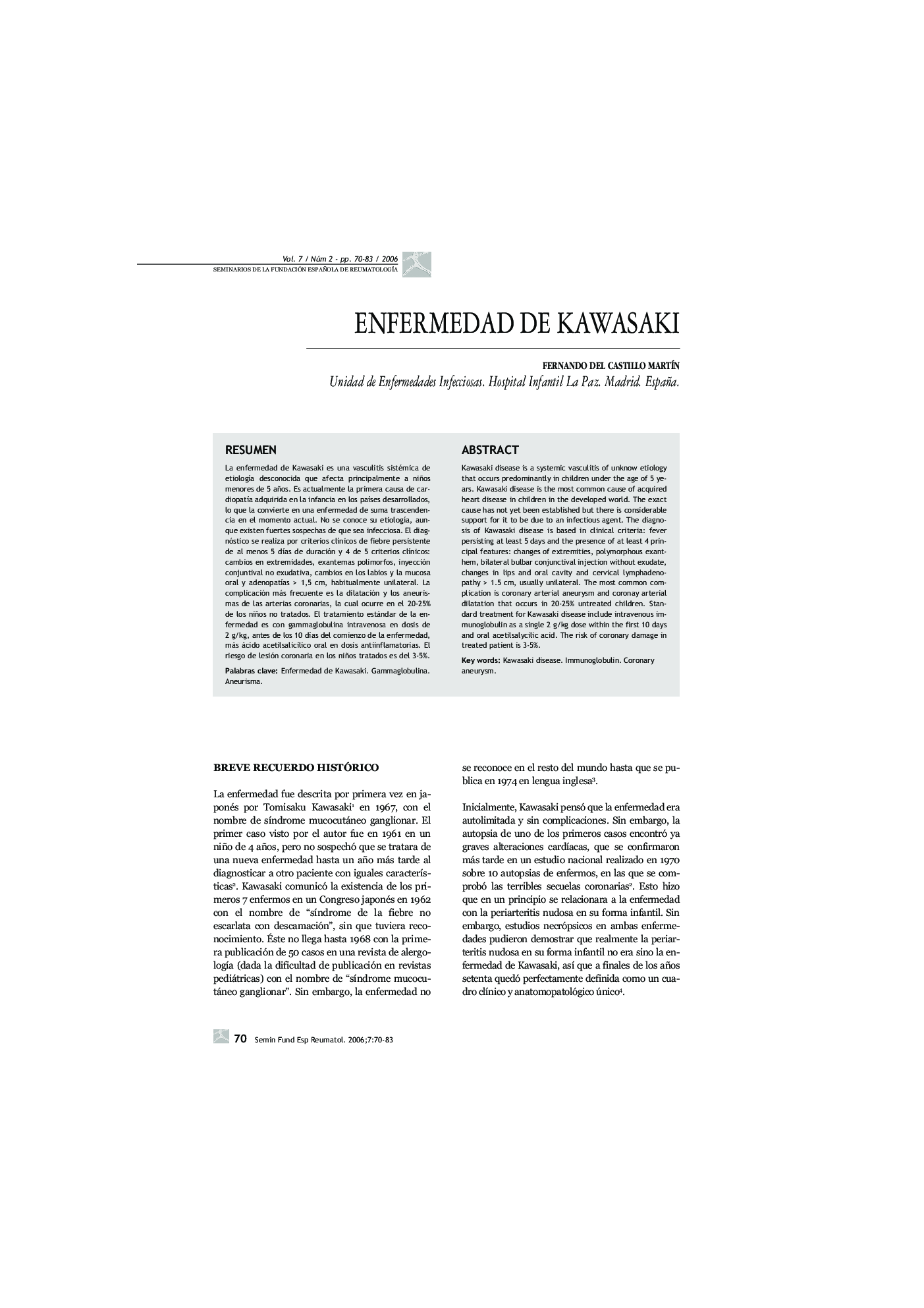| Article ID | Journal | Published Year | Pages | File Type |
|---|---|---|---|---|
| 3391182 | Seminarios de la Fundación Española de Reumatología | 2006 | 14 Pages |
Abstract
Kawasaki disease is a systemic vasculitis of unknow etiology that occurs predominantly in children under the age of 5 years. Kawasaki disease is the most common cause of acquired heart disease in children in the developed world. The exact cause has not yet been established but there is considerable support for it to be due to an infectious agent. The diagnosis of Kawasaki disease is based in clinical criteria: fever persisting at least 5 days and the presence of at least 4 principal features: changes of extremities, polymorphous exanthem, bilateral bulbar conjunctival injection without exudate, changes in lips and oral cavity and cervical lymphadenopathy > 1.5 cm, usually unilateral. The most common complication is coronary arterial aneurysm and coronay arterial dilatation that occurs in 20-25% untreated children. Standard treatment for Kawasaki disease include intravenous immunoglobulin as a single 2 g/kg dose within the first 10 days and oral acetilsalycilic acid. The risk of coronary damage in treated patient is 3-5%.
Related Topics
Health Sciences
Medicine and Dentistry
Immunology, Allergology and Rheumatology
Authors
Fernando del Castillo MartÃn,
